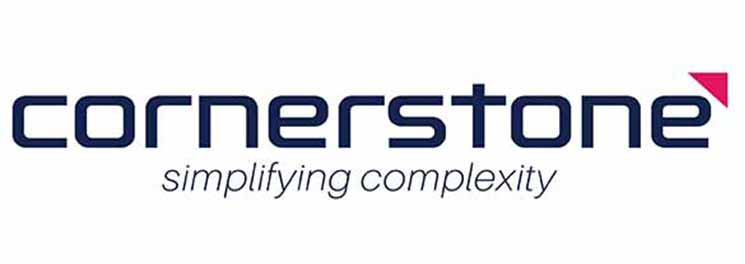
Australian Hearing is a statutory authority and part of the Australian government’s Department of Human Services. It provides hearing tests, hearing aids and related services for people across Australia.
It has more than 1,200 staff – mostly audiologists – who work at 115 hearing centres around the country, and also visit more than 300 other sites in remote or rural communities. Its head office is in Chatswood, near Sydney, and it generates annual revenues of over AU $200 million.
Australian Hearing provides over 400,000 services per annum to eligible customers such as young people, pensioners, and members of indigenous communities. To offer a more competitive and efficient service to these customers, Australian Hearing wanted to help its local managers run their hearing centres more effectively and along more businesslike lines.
Business challenge
Australian Hearing wanted to adopt a “retail-like” business model, giving the managers of its 115 hearing centres more control of finances and operations and using key performance indicators (KPIs) to help them focus on the right goals. Solution Cornerstone, an IBM® Business Partner, helped Australian Hearing build an analytics solution based on IBM Cognos® TM1®, which integrates data from Oracle Financials and the organisation’s CRM and appointments systems.
Enhancing the business model
“The strategy is to adopt a retail-like model, where each hearing centre manager has the power and resources to run their own business and serve their local community in the most effective way,” explains Mario Torresan, Chief Financial Officer at Australian Hearing. “To enable this, we needed to be able to give these managers more insight into the finances of each hearing centre – and we also needed to be able to monitor their performance centrally.”
However, the organisation’s existing IT systems – Oracle Financials and a CRM and appointments system – did not provide enough flexibility in their reporting capabilities to deliver this insight.
“We had a reporting package called Oracle Financial Analyzer that provided basic analysis of the general ledger and profit and loss, but our annual report and other board-level reports were created manually using spreadsheets,” says Amanda Millar, Finance Project Manager at Australian Hearing.
“When we decided to upgrade to Oracle 12, Oracle Financial Analyzer was no longer compatible – so it became a top priority to find a new and more comprehensive reporting solution.”
Finding the right solution
The finance team led the project, which was sponsored by the CFO. The project team reviewed the market and drew up a requirements specification. The first requirement was to replace the functionality of Oracle Financial Analyzer, but Australian Hearing also wanted to introduce a number of new capabilities, including performance management reporting, forecasting, and budgeting, customer analytics and web-based self-service reporting.
“We talked to some other finance teams in the Department of Human Services, and found that they were already using IBM Cognos TM1,” comments Amanda Millar. “We really liked the look of it. TM1 seemed to offer all the features we needed to achieve our goals.”
Building a partnership
The team approached IBM to discuss implementing the software, and IBM provided a list of Business Partners with the right qualifications and experience to deliver the project. Australian Hearing conducted a full RFQ process and ultimately selected Cornerstone Performance Management.
“Cornerstone were definitely the right choice – they helped with every aspect of the initial project, and we’ve now started working with them on some subsequent requirements that weren’t part of the original scope,” says Mario Torresan. “Our HR department decided to use TM1 too, so Cornerstone have extended the solution to handle both financial and HR data. In general, we’ve been very impressed with the speed of deployment of Cognos TM1, which is partly due to the user-friendly design of the product, and partly to Cornerstone’s expertise.”
Faster, more flexible reporting
The new solution provides a wide range of financial reports, which can all be generated with a few mouse-clicks – a dramatic improvement from the five-day manual process that was previously required. The increased flexibility of the new solution has enabled Australian Hearing to combine data from its Oracle Financials, CRM and appointments systems and generate a number of real-time KPIs for each hearing centre, and for the organisation as a whole.
“Our central finance team can now look at all the KPIs and trends, and quickly highlight any areas of the business that are falling short of their performance targets,” explains Amanda Millar. “As well as the financial data, we can also look at leading indicators such as the number of people we’ve seen and the number of appointments booked for the next month, so we get an idea of future performance too. There’s a list of the top ten and bottom ten performers for each KPI, so we know at a glance when and where to intervene to help the local managers get back on track.”
Mario Torresan adds: “It’s much better for the hearing centre managers too: they can now log in via the web and see their own results, which are refreshed on a daily basis. So instead of getting a phone call from their boss at the end of the month, they can be much more proactive and take more responsibility for improving performance.”
Full return on investment
By eliminating the need for manual reporting processes, the solution is already saving many hours of the finance team’s valuable time every month. By increasing the frequency of financial performance reporting from a monthly to a daily cycle, and by providing more users at all
levels of the organisation with access to performance data, the solution should also support better decision-making and greater operational efficiency in the longer term. It is not easy to quantify all of these benefits at this stage, but Australian Hearing estimates that the solution should deliver a full return on investment within 30 months.
“We’re very pleased with what we’ve already achieved with IBM Cognos TM1, and as we continue to train users and drive adoption, the benefits should only increase,” concludes Mario Torresan. “As a next step, we’re looking at harnessing the budgeting and forecasting capabilities of Cognos TM1, which should put us in an even stronger position to control our finances and help our hearing centres become even more competitive and productive businesses.”
Piers Wilson, Director at Cornerstone adds: “The implementation at Australian Hearing has been a great partnership between our two organisations, delivering the solution on time and under budget. I have no doubt that the success we have achieved to date will be replicated in the next phase.”
Download the case study
Download the case study here
Talk to us about your financial planning & analytics challenges


